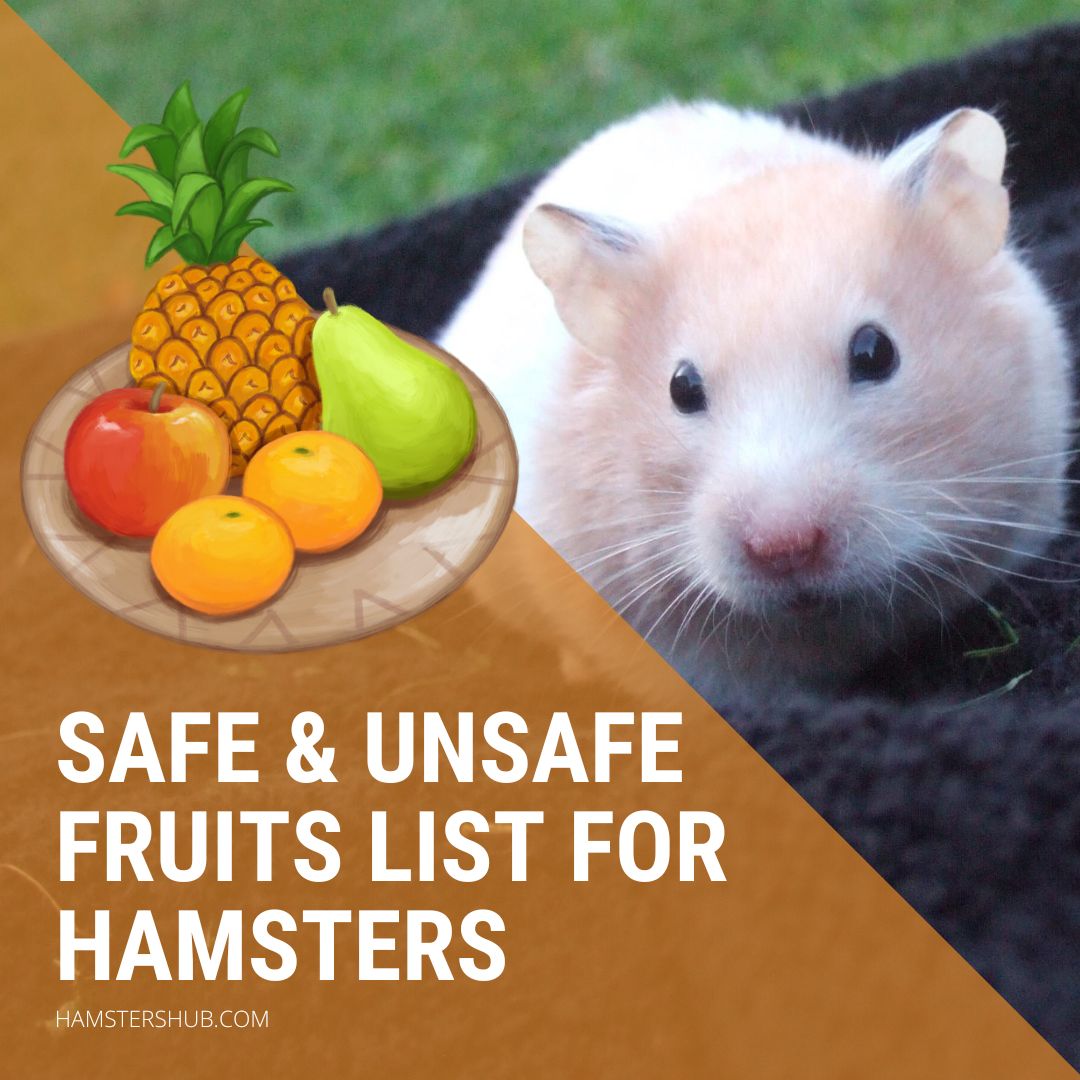Can Hamsters Safely Enjoy Fruits?

Imagine this: you’re snuggled up on a cozy evening, watching your tiny hamster scurry around its enclosure. You can’t help but wonder, "Can hamsters have fruits?" Just like us, our furry friends crave variety in their diet, and fruits can be a delightful treat for your hamster. However, introducing new foods to your pet's diet requires careful consideration. Let's dive into the world of hamster pet care guidelines and discover how to safely incorporate fruits into your hamster’s diet.
The Importance of a Balanced Hamster Diet
Did you know that a balanced hamster diet is essential for your pet’s health and well-being? In the wild, hamsters munch on a variety of seeds, grains, and vegetables. In captivity, it's our responsibility to replicate this natural diet as closely as possible. Fruits, while not a staple food, can be a nutritious addition to your hamster’s diet when given in moderation and with proper knowledge. Let’s explore how fruits can fit into your pet's meal plan.
Safe Fruits for Small Animals
Which Fruits Are Safe?
Before you rush to the kitchen to grab an apple or a banana, let’s discuss which fruits are safe for small animals like hamsters. The key is to choose fruits that are low in sugar and high in nutrients. Safe fruits for pets include apples (seedless), bananas, berries, and melons. Adding one small piece of fruit a few times a week can provide your hamster with vitamins and antioxidants without compromising its nutritious hammers diet.
Fruits to Avoid
On the flip side, there are fruits you should steer clear of. Citrus fruits like oranges and grapefruits are too acidic and can upset your hamster’s stomach. Grapes and raisins are high in sugar and should be avoided as well. Any fruits with seeds or pits, like apples and peaches, should be seedless to protect your little friend from potential choking hazards or toxicity. Always remember, moderation is key when it comes to introducing new fruits into your hamster’s diet.
How to Introduce Fruits for Hamsters Safely
So, you’ve identified the safe and safe fruits for small animals. But how do you introduce them into your hamster’s diet without causing any upset? It's like trying a new cuisine—you start with small bites and gradually increase. Begin by offering a tiny piece of fruit once or twice a week. Watch for any signs of digestive upset, such as diarrhea or vomiting. If your hamster tolerates the fruit well, you can gradually increase the amount to a few small pieces per week.
Remember, portion control is crucial. A small piece of fruit should be about the size of your hamster’s head. Overfeeding can lead to obesity and other health issues, so it’s essential to stick to the recommended amounts. Think of it like treating yourself to a slice of cake—it’s delightful in moderation but could become problematic if consumed daily.
Pet Care Guidelines for Healthy Hamsters
Enhancing your hamster’s diet with safe fruits is just one aspect of good pet care. Regular exercise, a clean living environment, and regular veterinary check-ups are equally important. If you’re considering adding fruits to your hamster's menu, make sure to consult your vet for personalized pet care guidelines. They can offer tailored advice based on your hamster’s breed, age, and overall health.
The Joy of Observing Your Hamster
Watching your hamster nibble on a piece of apple or a slice of banana can be incredibly satisfying. It's a small moment that connects you to your pet and reminds you of the joy they bring into your life. So, why not make these moments a regular part of your bonding experience? By following the right pet care guidelines, you can safely introduce fruits into your hamster’s diet and enjoy the little pleasures that come with it.
What have we learned?
So, can hamsters have fruits? Absolutely, but with a few caveats. Understanding the nuts and bolts of a balanced hamster diet and the safe fruits for small animals is crucial. Always remember the importance of moderation and portion control. With the right approach and a little bit of patience, you can enrich your hamster’s diet and strengthen your bond. So, go ahead, grab that apple slice, but remember to keep it small and seedless. Your tiny friend will thank you!
Conclusion
Introducing safe fruits into your hamster’s diet can be a rewarding experience for both you and your pet. By following the pet care guidelines and observing your hamster’s reactions, you can ensure a healthy and happy hamster. So, take the first step today and click here to find out more about enriching your hamster's diet with delicious and safe fruits. Remember, the key to a balanced diet is variety and moderation. Happy hamster parenting!
FAQs
Can hamsters eat apple seeds?
No, apple seeds contain cyanide, which is toxic to hamsters. Always ensure that any apples you give to your hamster are seedless.
How often can I give my hamster fruits?
Fruits should be given sparingly, about once or twice a week, and in small portions. This ensures your hamster gets the benefits without the risks of overfeeding.
What should I do if my hamster shows signs of digestive upset after eating fruit?
If your hamster experiences diarrhea, vomiting, or any other signs of digestive upset, stop giving the fruit immediately and consult your vet. They can provide guidance tailored to your hamster’s specific needs.
Are there any fruits that are particularly beneficial for hamsters?
Berries like blueberries and strawberries are excellent choices due to their high antioxidant content and lower sugar levels. Always remember to introduce new foods gradually and in moderation.
Can I give my hamster dried fruits?
Avoid giving dried fruits, as they are high in sugar and can lead to health issues like obesity and dental problems. Fresh fruits are always the better option.
```
0 Response to " Can Hamsters Safely Enjoy Fruits?"
Post a Comment